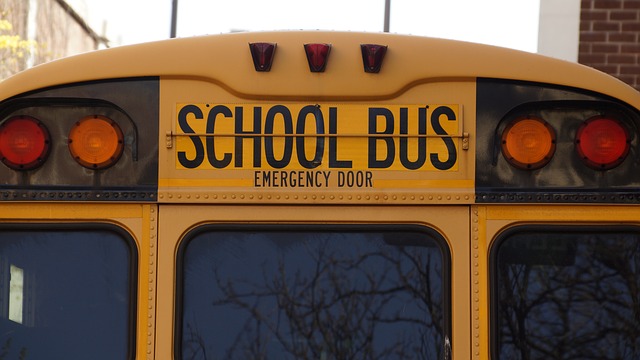A Weekly Meetup Aims to Keep Black Male Teachers in the Classroom
Research suggests that black students thrive when they have black teachers. And yet, very often students of color don’t have much exposure to teachers who look like them. Black teachers account for 27 percent of the state’s teacher workforce, according to a Mississippi Today report, but black students represent almost half of the students attending the state’s public schools. The gap in teacher representation is wide. The Mississippi Association of Educators, a teachers’ union, launched a weekly virtual meetup for male educators of color one year ago, with an eye toward making this gap smaller. Every Thursday educators with up to five years’ experience log in for a video chat to discuss strategies, vent and learn from each other. Bradley, who has 15 years of teaching experience, acts as a mentor. He shares his own experiences as a reference point and encourages the group to outline professional development goals. It’s the type of support that the union hopes will help teachers grow in the classroom while empowering them to pursue leadership roles.
Do High-Stakes Tests Make Teachers More Likely to Quit?
A new study found that eliminating state testing did not have an effect on overall teacher turnover and attrition. Early-career teachers, however, are less likely to leave the profession when there are fewer required tests. The working paper, which was published by the Center for Analysis of Longitudinal Data in Education Research, analyzed the effects of changes in mandated state testing in Georgia. For eight years, all students in grades 1 through 8 were tested in reading, English/language arts, and math, and students in grades 3–8 were also tested in science and social studies. But starting in 2011, the state began to scale back the number of required end-of-year tests. Now, students in grades 3 through 8 are tested in English/language arts and math, and only students in grades 5 and 8 are tested in science and social studies.
Illinois School Districts Weigh Competing Needs after Governor Suggests Freeze
Illinois school districts are rethinking next school year’s budget after Gov. J.B. Pritzker surprised them in announcing last week that the state will increase education spending but hold back some of the funds they expected pending the outcome of a November tax vote. If the legislature approves Pritzker’s $350 million school spending increase, the governor would place in reserve $150 million for schools and deliver it only if voters pass his progressive income tax plan in November. Pritzker has argued that would bring in additional revenues in future years to shore up schools and other critical areas. In the interim, districts are paring back their expectations and budgets for next year.
States Putting Early Career Exploration to Work for Students
Research has found that adolescence is a time when students begin to think more abstractly, learn through teamwork and have a desire to explore topics they find interesting. Additional research suggests that middle school is a time when students can benefit the most from career exploration. Given where adolescent children are developmentally, there is an opportunity for students to develop employability skills and gain a sense of their interests through career exploration in middle school and early high school. There are a series of ways that states have developed and supported career exploration and career and technical education opportunities for middle school students. Generally, states have considered policy and state action to foster and support early CTE and career exploration.
How States Allocate Funding for Rural Schools
All states have rural districts and schools and must contend with barriers that prevent equitable and adequate education for all. In fact, in 23 states, more than 20 percent of students attend a rural school. Research shows that rural schools face many of the same challenges as urban schools, albeit in a different context: High levels of poverty negatively affect property tax revenue, an educational achievement gap between racial and ethnic groups remains, and it’s difficult for schools to recruit and retain good teachers. Indeed, teachers are expected to do more with fewer resources in rural schools. One way states attempt to address these challenges is by increasing the amount of money rural schools receive through funding formulas, specifically with small school size and isolated school funding adjustment policies. According to our recent 50-State Comparison on K-12 Funding, 29 states have a small size or isolated adjustment policy in statute.
The Lasting Benefits and Strong Returns of Early College High Schools
There is a growing interest across the country in dual enrollment programs, which allow students to earn a high school diploma and college credits at the same time. Many policymakers and practitioners see these programs as a way to increase college access and better prepare students for postsecondary success. A body of research from the American Institutes for Research (AIR) confirms that one type of dual enrollment program—Early College High Schools—has a positive, lasting impact on postsecondary enrollment and success and that there is a strong return on the investments made in Early Colleges.
Start Time for U.S. Public High Schools
This report examines the school start time for public high schools in the United States by selected characteristics and state. It uses data from the School Questionnaire of the 2017–18 National Teacher and Principal Survey (NTPS), which is both a state and nationally representative sample survey of public and private K–12 schools, principals, and teachers in the 50 states and the District of Columbia. The selected school samples include about 10,600 traditional and charter public schools and 4,000 private schools. The American Academy of Pediatrics recommended in August 2014 that middle and high schools start at 8:30 a.m. or later to give students the opportunity to get a sufficient amount of sleep.

